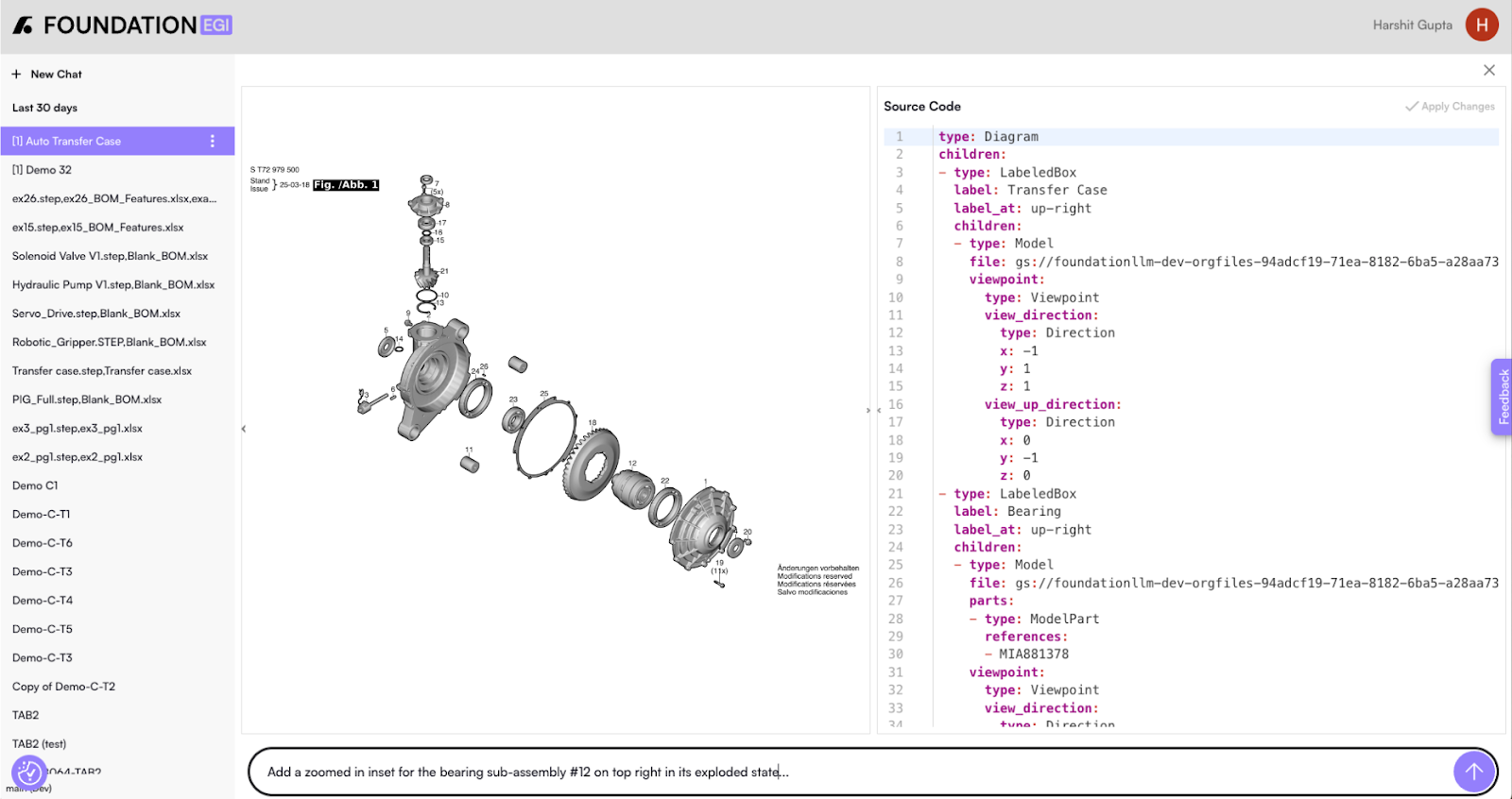
We’ve talked about the shortcomings of current AI approaches in design and manufacturing, particularly their struggle with accuracy, engineering rigor, and traceability, and how treating engineering like programming is essential to building an Engineering General Intelligence (EGI).
But that raises a key question: how do you actually program engineering?
How do you translate a technical design or a process flow into structured, verifiable code? The answer lies in Domain-Specific Languages or DSLs.
Domain-Specific Languages are purpose-built programming languages tailored to a specific problem space. Unlike general-purpose languages (like Python or Java), DSLs are designed to express the logic, rules, and workflows of a particular domain, whether it’s electronics design, building architecture, or mechanical part drafting.
They allow experts to encode complex intent in a format that’s both machine-readable and human-comprehensible.
Imagine you’re a Senior Engineer, asking your team member to generate 2D part drawings for a new product. It is a routine task that engineers the world over perform every day. A typical workflow would look something like this:
Each step above involves a combination of hard rules, best practices, and engineering discretion. Today, this expertise lives in people's heads or is manually executed in siloed tools.
General-purpose AI tools, like today’s LLMs, can't replicate this workflow. Ask ChatGPT to make an engineering drawing and you’ll get something generic at best, if not outright wrong, not suitable for any engineering tasks.
EGI, on the other hand, can get it right but only if it understands the request, interprets the intent, and encodes it in a structured, verifiable format.
That’s exactly what DSLs enable.
At Foundation EGI, DSLs sit at the heart of our platform. Here’s how they transform ambiguous human requests into reliable engineering workflows:

Using DSLs in EGI unlocks capabilities that simply weren’t possible with legacy tools or traditional AI:
DSLs constrain natural language to a finite set of valid engineering outcomes, ensuring safe, physical outputs.
Workflows encoded in DSLs can be tested automatically. This surfaces errors or inconsistencies before they reach production.
Every AI-generated output is traceable back to its inputs and logic. You always know what parameters were used, and why.
Need to make a design change? Modify the DSL. No need to manually recreate the drawing or workflow. It's as simple as editing code (Or ask it in conversational language and let EGI deal with the rest!)
And no, this doesn’t mean every engineer needs to write code. Thanks to natural language interfaces and intuitive tooling, DSLs remain under the hood. Engineers continue solving problems the way they always have, but now with a powerful programmable engine translating their intent into structured logic that machines can understand, test, and scale.
The power of DSLs extends far beyond drawing generation. Some examples:
And many more use cases. If you believe in our vision to transform engineering, come build with us! Write to us at info@foundationegi.com.